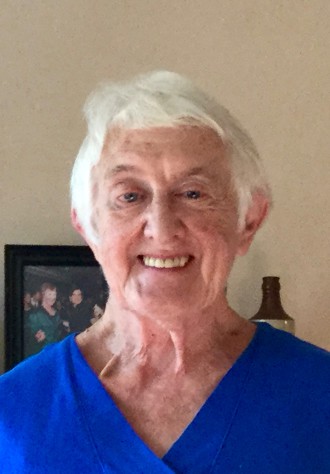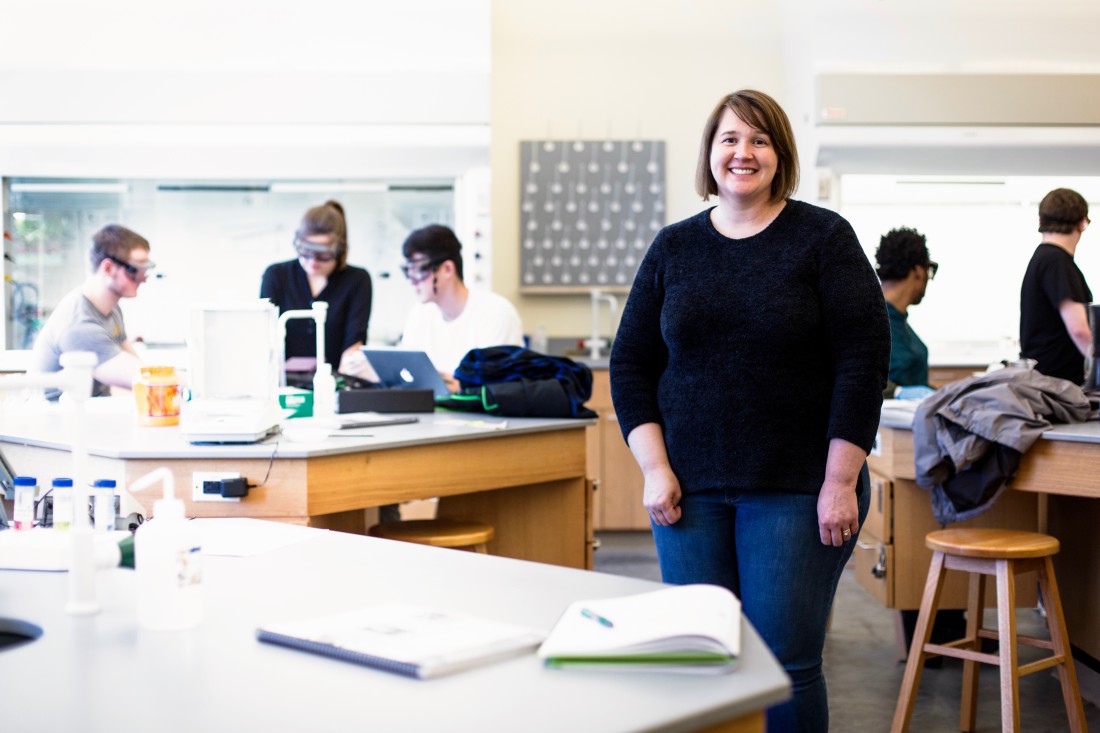When Joan Kaplan received recognition for achievements in biochemistry research from her alma mater, she was described as one of the best students in the field — because she “worked like a man.”
Kaplan and other women discussed such issues of gender bias in the science, technology, engineering and math fields on Sept. 13 when the Osher Lifelong Learning Institute at UNC Asheville kicked off its interdisciplinary “Women in STEM” lecture series.
“Growing up, there was a physical wall between boys and girls in the school,” Kaplan said at the event. “I could study chemistry, but not calculus like the boys were studying on the other side. The reason I was given is that girls would not understand calculus. We were meant to study Latin and French and go into the humanities.”

As a freshman in college, Kaplan took calculus and physics courses without noticing blatant gender bias in the field. But by her junior year it was clear to her that professors encouraged the men to pursue graduate research, while they assured the handful of women in the major they would become excellent research assistants.
Kaplan has since made many significant discoveries studying HIV, and the walls she talked about look more like glass ceilings.
Subtleties of the gender gap
“Gender bias in STEM is subtle and hard to prove,” research ecologist Katherine Greenberg said during the lecture. “It is hard to pinpoint and hard to quantify. This can lead to self-doubt for women.” Greenberg said despite an increase in women attaining STEM degrees, gender gaps in tenure and publication remain prevalent.
These disparities, alongside social attitudes, contribute to what many describe as the leaky pipeline model. “From enrollment in higher education and completion of STEM degrees to gaining a higher career status, along the way women drop out, and many times it is because they are discouraged,” says Howard Jaslow, coordinator of the “Women in STEM” lecture series. He says this process begins as early as elementary school and retention becomes increasingly difficult as female students progress through education.
Jaslow’s granddaughter inspired him to start this conversation about gender bias in STEM after she was mistaken for a receptionist while getting her Ph.D. in microbiology from Duke University. He says many lady luminaries he admires — such as Elizabeth Blackwell, Rosalind Franklin and Lise Meitner — have gone unrecognized. “We have done a variety of STEM lectures over the past six years, but this is the most important one,” he says. Hermann Gucinski, a fellow OLLI instructor, helped develop the series.
STEM’s image problem

One fissure in the pipeline for women who would otherwise pursue careers in technology and engineering is marketing for educational programs. “When people think of computer programmers, they think of Bill Gates, Steve Jobs and Mark Zuckerberg. These are all white men,” said Pamela Silvers, a computer technologies instructor at A-B Tech. “If there are a lot of people that look like you, it is less likely you will be discouraged — you can picture yourself in the field. When women walk into a male-dominated environment, it is easy to feel they don’t belong.”
Silvers graduated from UNCA and Western Carolina University and is working to change the environment at the academic level. She received two National Science Foundation grants to increase numbers of highly skilled workers through technician preparation programs at A-B Tech in Asheville. The program’s female participation jumped from 39 students to 75 students during this campaign.
Silvers focused on advertising in order to remedy the imbalance. During her talk at the “Women in STEM” lecture, she displayed old posters created to draw students to technology programs that depicted groups of men surrounding high-tech equipment. She then showed new campaign images that are more human-centric and feature diverse female role models.
Scientists in next generation
A-B Tech’s student population is nontraditional, serving students of all ages. Silvers strived to help all women picture themselves in technology careers by traveling to local high schools and sharing her vision of diverse women in STEM with the community. She said these images are critical to the younger generation of women who might not have role models in jobs like cybersecurity.
“Attitudes are improving,” said Kaplan, sharing her delight that her granddaughter, a fourth-grader, is learning computer coding at school.
But, Jaslow says, “We do not live in a brave new world, where constant bias and prejudice does not exist.” In a climate of escalating global competition, Jaslow says it is important not to lose sight of significant contributions made by women in STEM as well as the obstacles they face.
The conversation continues with nine more lectures in the UNCA Reuter Center, room 102A. The next event, “Women in Chemistry,” will feature Oksana Love and Sally Wasileski of the UNCA Chemistry Department on Monday, Sept. 18. All events are free and open to the public and begin at 4:30 p.m.




Before you comment
The comments section is here to provide a platform for civil dialogue on the issues we face together as a local community. Xpress is committed to offering this platform for all voices, but when the tone of the discussion gets nasty or strays off topic, we believe many people choose not to participate. Xpress editors are determined to moderate comments to ensure a constructive interchange is maintained. All comments judged not to be in keeping with the spirit of civil discourse will be removed and repeat violators will be banned. See here for our terms of service. Thank you for being part of this effort to promote respectful discussion.